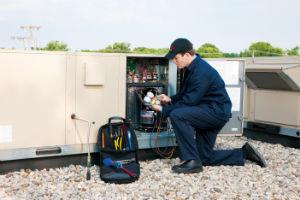 The author gives some easy-to-apply guidelines for improving energy savings in an HVAC installation.
The author gives some easy-to-apply guidelines for improving energy savings in an HVAC installation.
by: Ingeniero Jorge Gaitán*
The easiest and fastest way to reduce operational costs is to upgrade HVAC systems to generate lower power bills, fewer service calls, and less downtime.
The key to achieving significant savings is inspecting the systems, proving that the system is delivering the benefits for which it was designed, and working on the way it should.
Here are five ways to control operational costs now and for years to come:
1. Choose a simplified wiring system and easy-to-navigate controller. Simplified wiring with coded, labeled, and color-coded connectors reduces installation hours and helps eliminate workplace delays. Units that offer button-driven controllers instead of encapsulated switches (DIPs) and text prompts instead of codes are easier to install and can help ensure that high-efficiency systems reach the efficiency levels for which they were designed.
2. Buy equipment with the highest energy efficiency rating. Up to half of the energy a commercial building consumes is spent by its HVAC system: Replacing an old roof unit with a new, high-efficiency model can reduce utility bills by hundreds of dollars per unit. Light commercial units are rated up to 17.0 SEER. Carefully examine the manufacturer's HVAC leasing contract program to do the upgrade without the significant upfront cost.
3. Look for energy-saving units in the partial cooling operation. Systems that use supply fan technology with variable frequency transmission offer just the right amount of cooling to ensure comfort while controlling energy use.
A school in Hermosillo, Mexico was able to reduce its annual cooling costs by 43% by replacing a single five-ton unit of 9.0 SEER with a five-ton, 17.0-seER unit. (Based on the area's average electricity cost of $0.22 cents/kWh, annual cooling costs would be reduced from an estimated $3,578 to $2,028 per unit.)
4. Insist on service reports. Regular service reports show exactly how the equipment is performing and verify service performance and maintenance. Look for a system that details the operating times and on/off cycles of critical components, as well as the total power on time and sensor readings for outside, return, and discharge air temperature.
Service reports provide a snapshot of the unit's operation before and after service. Units that keep track of the condition or alarm messages (dated and timed) help verify that the unit has been working properly and has had no problems since the last service or maintenance call.
5. Search for rooftop units with real-time reporting function. Systems with USB ports can pass service reports directly to a memory, saving valuable diagnostic time. They can also be used to transfer unit profiles to another unit on the roof, leaving the new unit up and running in a matter of seconds.
The lifecycle cost—or total cost of ownership (TCO)—of HVAC equipment is obtained by adding projected energy use, cost of maintenance hours, and product reliability, among other factors.
* Lennox Industries, Inc.













